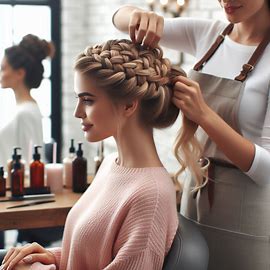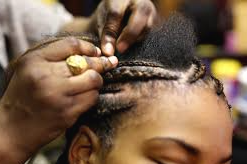What is Braiding?

Braiding is a timeless art form that weaves together strands of hair into intricate patterns, showcasing both creativity and skill. Whether opting for a classic three-strand braid, a trendy fishtail, or elaborate cornrows, braids offer versatility and elegance, perfect for any occasion from casual outings to formal events. Beyond their aesthetic appeal, braids also serve practical purposes, keeping hair neatly styled and protected from damage. With endless possibilities for customization and adornment, braiding remains a beloved technique for expressing individuality and celebrating cultural traditions across the globe.
How Braiding is Done

Braiding is a technique used to interweave multiple strands of hair, fabric, or other flexible materials to create a cohesive and decorative structure. Here’s a general guide to how braiding is done for hair:
- Prepare the hair: Start by brushing or combing the hair to remove any tangles. If desired, apply a small amount of hair product like gel or mousse to help hold the braid and prevent flyaways.
- Divide the hair: Separate the hair into sections depending on the desired style of braid. For a simple three-strand braid, divide the hair into three equal sections. For more complex braids like French braids or fishtail braids, you may need to divide the hair into more sections.
- Start braiding: Hold one section of hair in each hand and use your fingers to cross the right section over the middle section, then the left section over the new middle section. This is the basic motion for a three-strand braid. Repeat this process, alternating sides until you reach the end of the hair.
- Secure the braid: Once you’ve braided to the desired length, secure the end of the braid with a hair tie, clip, or hairpin.
- Optional: You can gently pull on the edges of the braid to loosen it and create a softer, more voluminous look. This is especially common with French braids.
For more complex braids like French braids or fishtail braids, the process involves incorporating additional sections of hair as you braid. With practice, you can create intricate braided hairstyles for various occasions.
Remember, practice makes perfect when it comes to braiding, so don’t get discouraged if your first attempts aren’t perfect!
Benefits of Braiding
Braiding offers several benefits, especially when it comes to hair care:
- Protective Styling: Braiding can help protect the hair from damage caused by environmental factors like sun exposure, wind, and pollution. It can also minimize friction and tangling, reducing the risk of breakage and split ends.
- Reduced Styling Time: Once a braid is done, it can last for several days with minimal maintenance, making it a convenient option for busy individuals or those with hectic schedules.
- Versatility: Braids can be styled in numerous ways to suit different occasions and preferences. Whether it’s a simple three-strand braid for a casual look or an intricate updo for a formal event, braiding offers versatility in styling.
- Hair Growth: Some people believe that braiding can promote hair growth by minimizing breakage and protecting the ends of the hair. However, individual results may vary, and hair growth is influenced by various factors such as genetics and overall hair care practices.
- Texture Enhancement: Braiding can enhance the natural texture of the hair, creating waves or curls when the braids are removed. This can add volume and dimension to the hair without the need for heat styling tools.
- Cultural and Stylistic Expression: Braiding has cultural significance in many communities and can be a form of artistic expression. It allows individuals to showcase their creativity and personal style through intricate braid patterns and designs.
Overall, braiding is not only a practical hairstyling technique but also a cultural tradition and a means of self-expression, offering both functional and aesthetic benefits.

